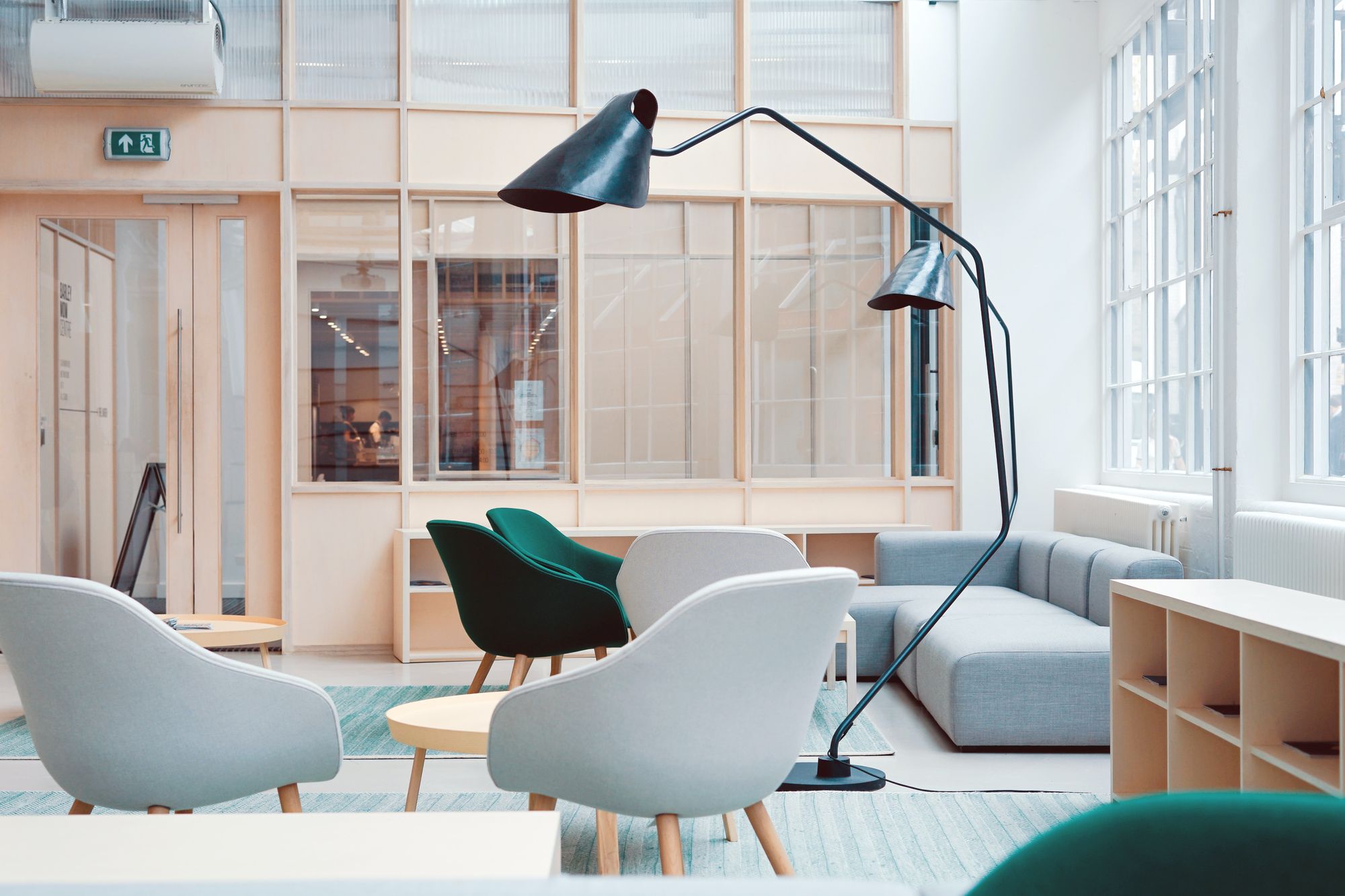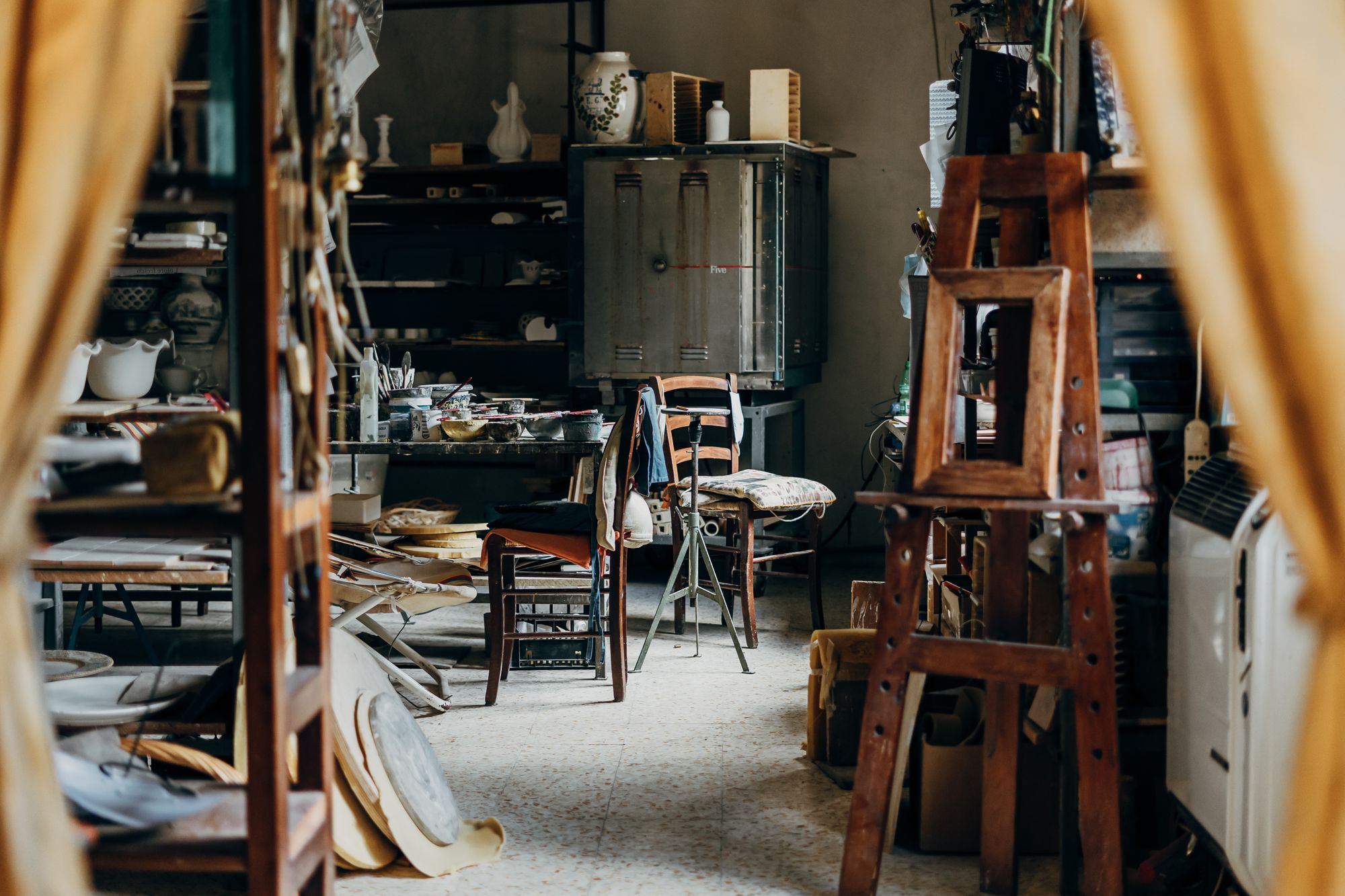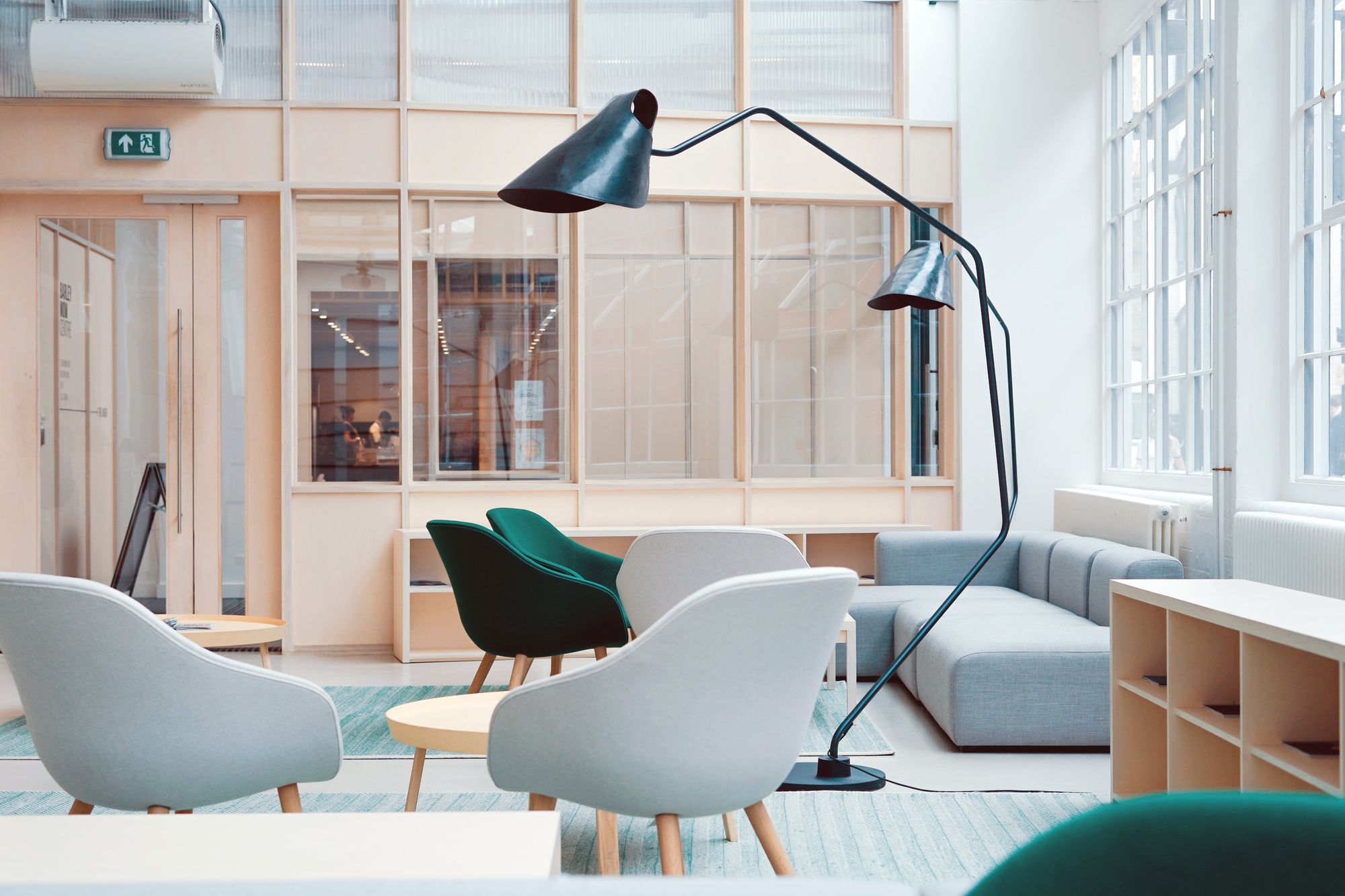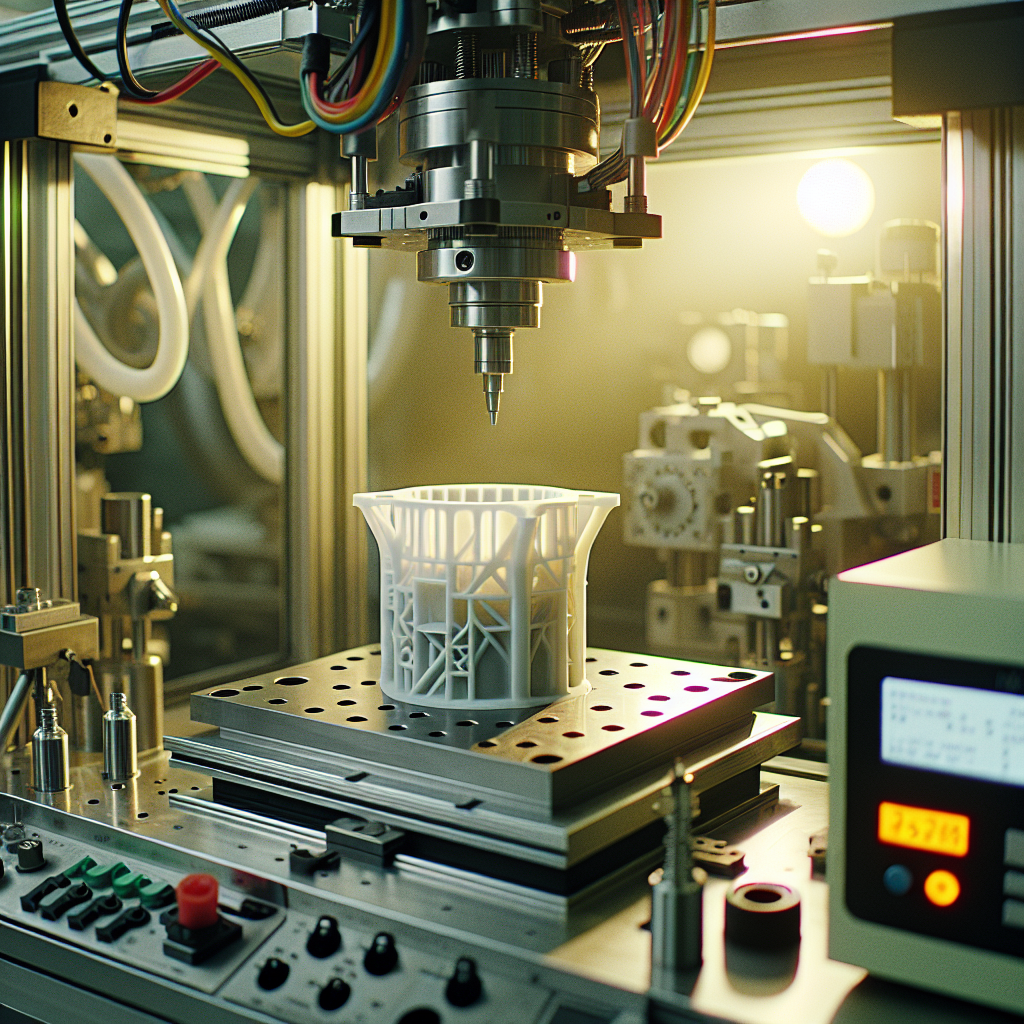According to a report by the United Nations, the furniture industry accounts for around 1.3 billion tons of greenhouse gas emissions each year, making it one of the largest contributors to climate change. (Source: UN Environment Programme)
A survey by the International Labour Organization found that labor exploitation and poor working conditions are common in the furniture sector, with workers often subjected to low pay, long working hours, and unsafe working conditions. (Source: International Labour Organization)
A study by the Ellen MacArthur Foundation found that extending the life of furniture products by just five years could save up to 70 million tons of carbon emissions by 2030. (Source: Ellen MacArthur Foundation)
The furniture industry in the United States generated $115 billion in revenue in 2020, with the industry employing over 425,000 people. (Source: IBISWorld)

Furniture manufacturing is a significant industry that plays an important role in economies worldwide. While the industry has numerous benefits, including job creation, economic growth, and innovation, it also faces several challenges and drawbacks.
On the one hand, furniture manufacturing can contribute to sustainable development by using sustainable materials, reducing waste, and promoting responsible disposal practices. On the other hand, the industry can also have negative impacts on the environment, labor practices, and market volatility.
As such, understanding the pros and cons of furniture manufacturing is essential for companies, consumers, and policymakers to make informed decisions about the industry's future direction.
In this context, this topic requires a careful examination of the advantages and disadvantages of furniture manufacturing to better understand its impact on society and the environment.
This article will help you thereby covering the following topics:
- What is Furniture Manufacturing?
- What are the Pros of Furniture Manufacturing?
- What are the Cons of Furniture Manufacturing?
- What are the Challenges Associated with Furniture Manufacturing?
- How to Address the Challenges Associated with Furniture Wastes?
- FAQs related to the Pros and Cons of Furniture Manufacturing
- How can Deskera Help You with Furniture Manufacturing?
- Key Takeaways
- Related Articles
What is Furniture Manufacturing?
Furniture manufacturing refers to the process of designing, producing, and assembling furniture products, such as chairs, tables, sofas, and cabinets, for use in residential, commercial, and institutional settings.
The process typically involves a range of activities, including designing the product, selecting and sourcing materials, cutting, shaping, and assembling materials, and finishing the product.
Furniture manufacturing can be carried out using a variety of materials, including wood, metal, plastics, and textiles, and can involve both traditional and modern production techniques, such as handcrafting and automated production.
The furniture manufacturing industry is a significant global industry, with companies ranging from small, family-run businesses to large multinational corporations.
What are the Pros of Furniture Manufacturing?
Furniture manufacturing has several potential benefits, including:
Job Creation
Furniture manufacturing can create a significant number of jobs, which is one of the main benefits of this industry. Jobs can be created at every stage of the furniture manufacturing process, from design and engineering to production and distribution.
Some of the jobs that can be created in the furniture manufacturing industry include the following:
- Designers: Furniture designers create the concept and specifications for new furniture pieces, working with materials, colors, and textures to create unique designs.
- Engineers: Furniture engineers use computer-aided design (CAD) software to create detailed drawings and blueprints of furniture pieces, ensuring that they are structurally sound and meet safety standards.
- Technicians: Furniture technicians operate and maintain the machinery used in furniture manufacturing, ensuring that it runs smoothly and efficiently.
- Craftsmen: Furniture craftsmen use a range of tools and techniques to create high-quality furniture pieces, from cutting and shaping the wood to upholstering and finishing.
- Support staff: Support staff, such as administrative assistants, accountants, and marketing professionals, are also needed to support the day-to-day operations of furniture manufacturing companies.
Overall, furniture manufacturing can create a diverse range of jobs, from highly skilled craftsmen to support staff, providing opportunities for people with different levels of education and experience.
These jobs can contribute to the economic growth of the local and national economies by providing employment opportunities and generating revenue.
Economic Growth
Furniture manufacturing can contribute to economic growth in several ways, making it an important pro of this industry.
Here are some of the key ways furniture manufacturing can contribute to economic growth:
- Job creation: As I mentioned earlier, furniture manufacturing can create a significant number of jobs, providing employment opportunities for people at every level of education and experience. These jobs can contribute to the local and national economies by generating income for individuals and taxes for governments.
- Revenue generation: Furniture manufacturing companies can generate revenue by selling their products both domestically and internationally. This revenue can be reinvested in the company or used to pay salaries, invest in new equipment and technology, and expand the business.
- Investment opportunities: Furniture manufacturing can attract investment from both domestic and foreign sources, providing capital for companies to expand their operations, increase production capacity, and develop new products.
- Supply chain support: Furniture manufacturing relies on a complex supply chain of materials, equipment, and services. This supply chain can create additional economic activity in the areas where these goods and services are produced, transported, and sold.
- Infrastructure development: The growth of the furniture manufacturing industry can lead to the development of new infrastructure, such as factories, warehouses, and transportation networks. This infrastructure can support the growth of other industries and contribute to economic growth more broadly.
Overall, furniture manufacturing can contribute to economic growth by creating jobs, generating revenue, attracting investment, supporting supply chains, and developing infrastructure.
Innovation and Creativity
Innovation and creativity are important pros of furniture manufacturing, as they allow manufacturers to create unique and high-quality products that can meet the changing needs and preferences of consumers.
Here are some ways innovation and creativity can be beneficial for furniture manufacturing:
- Unique designs: Furniture manufacturing companies can differentiate themselves from their competitors by developing unique and innovative designs that meet the changing demands of customers. By continually coming up with new designs and products, furniture manufacturers can keep their customers interested and engaged.
- Use of new materials and technologies: Furniture manufacturing companies can incorporate new materials and technologies into their products, allowing them to create furniture that is more durable, comfortable, and functional. This can also help furniture manufacturers reduce their environmental impact by using sustainable materials and production methods.
- Customization options: Innovation and creativity can also allow furniture manufacturers to offer more customization options to their customers. This can help manufacturers better meet the needs and preferences of individual customers, leading to increased customer satisfaction and customer loyalty.
- Competitive advantage: By being innovative and creative, furniture manufacturers can gain a competitive advantage over their rivals. This can help them increase their market share, expand their customer base, and grow their business over time.
- Improved production processes: Innovation and creativity can also lead to the development of new production processes that are more efficient, cost-effective, and environmentally friendly. This can help furniture manufacturers improve their operations and reduce their manufacturing costs, leading to increased profitability over time.
Overall, innovation and creativity are important pros of furniture manufacturing that can help manufacturers stay competitive, improve their products and services, and better meet the needs and preferences of their customers.
Customization and Personalization
Customization and personalization are significant pros of furniture manufacturing, as they allow customers to get furniture that suits their specific needs and preferences.
Here are some ways customization and personalization can benefit furniture manufacturing:
- Meeting customer preferences: By offering customization options, furniture manufacturers can better meet the preferences of individual customers. This can lead to increased customer satisfaction and loyalty, as customers are more likely to buy from companies that offer products tailored to their needs. This will also improve customer retention, as well as encourage returning customers.
- Increased sales: By offering customization options, furniture manufacturers can appeal to a wider range of customers. This can lead to increased sales and net revenue over time as more customers are attracted to the company's products.
- Differentiation from competitors: By offering customization options, furniture manufacturers can differentiate themselves from their competitors. This can help them stand out in a crowded market and increase their market share over time.
- Enhanced product quality: Customization options can also help furniture manufacturers improve the quality of their products. By allowing customers to choose the materials, colors, and designs of their furniture, manufacturers can ensure that the finished product meets the highest standards of quality and craftsmanship.
- Flexibility in design: Customization options can also provide furniture manufacturers with greater flexibility in their designs. This can lead to more creative and innovative products that better meet the changing needs and preferences of customers.
Overall, customization and personalization are important pros of furniture manufacturing that can benefit both customers and manufacturers.
By offering customization options, furniture manufacturers can improve customer satisfaction, increase sales, differentiate themselves from their competitors, enhance product quality, and provide greater design flexibility.
Environmental Benefits
Furniture manufacturing can have environmental benefits when manufacturers adopt sustainable practices and materials.
Here are some ways furniture manufacturing can contribute to environmental sustainability:
- Use of sustainable materials: Furniture manufacturers can use sustainable materials like FSC-certified wood, recycled plastic, and bamboo to reduce their environmental impact. By using sustainable materials, furniture manufacturers can help reduce deforestation, greenhouse gas emissions, and waste.
- Recycling and waste reduction: Furniture manufacturers can also reduce waste and environmental impact by implementing recycling programs and using eco-friendly packaging. Recycling can help reduce the amount of waste sent to landfills, while eco-friendly packaging can help reduce greenhouse gas emissions and the use of harmful chemicals.
- Energy efficiency: Furniture manufacturing companies can also reduce their energy consumption and carbon footprint by implementing energy-efficient practices and using renewable energy sources. This can help reduce greenhouse gas emissions and save money on energy bills.
- Life cycle assessment: Furniture manufacturers can also conduct a life cycle assessment (LCA) to evaluate the environmental impact of their products, from raw material extraction to disposal. By conducting an LCA, manufacturers can identify opportunities to reduce environmental impact and improve sustainability throughout the product's life cycle.
- Consumer awareness: By promoting the environmental benefits of their products and practices, furniture manufacturers can help raise awareness among consumers and encourage them to make more sustainable choices.
Overall, furniture manufacturing can have environmental benefits when manufacturers adopt sustainable practices and materials.
By using sustainable materials, reducing waste, implementing energy-efficient practices, conducting LCAs, and raising consumer awareness, furniture manufacturers can reduce their environmental impact and promote environmental sustainability.
Quality Control
Quality control is an essential pro of furniture manufacturing that can ensure that the finished products meet the required standards of quality and safety. Here are some ways quality control can benefit furniture manufacturing:
- Consistency in product quality: Quality control ensures that furniture products meet the required standards of quality and safety, leading to consistency in product quality. This can lead to increased customer satisfaction, as customers are more likely to purchase products that meet their expectations of quality.
- Reduction in defects and waste: Quality control can also help reduce defects and waste in the production process. By identifying and correcting defects early in the production process, furniture manufacturers can reduce the number of defective products produced, saving time and resources.
- Cost savings: By reducing defects and waste, quality control can also help furniture manufacturers save money. Fewer defective products mean fewer costs associated with rework, scrap, and customer returns.
- Compliance with regulations: Quality control can also help furniture manufacturers ensure compliance with regulations and standards set by government agencies and industry organizations. This can help prevent legal issues, fines, and other penalties that may arise from non-compliance.
- Reputation: Finally, quality control can help furniture manufacturers maintain their reputation in the market. By consistently delivering high-quality products that meet customer expectations, manufacturers can build a strong reputation for quality and reliability, leading to increased customer loyalty and brand recognition.
Overall, quality control is an important pro of furniture manufacturing that can ensure consistency in product quality, reduce defects and waste, save costs, ensure compliance with regulations, and build a strong reputation for quality and reliability.
Brand Recognition
Brand recognition is an important pro of furniture manufacturing that can help companies establish themselves as market leaders and increase their market share. Here are some ways brand recognition can benefit furniture manufacturing:
- Increased customer loyalty: Brand recognition can lead to increased customer loyalty, as customers are more likely to buy from companies that they recognize and trust. This can lead to repeat purchases and positive word-of-mouth marketing.
- Competitive advantage: Companies with strong brand recognition are better positioned to compete in the market. Strong brand recognition can help companies differentiate themselves from their competitors and establish themselves as market leaders.
- Pricing power: Companies with strong brand recognition may be able to charge premium prices for their products. Customers may be willing to pay more for products from companies that they recognize and trust.
- Expansion opportunities: Strong brand recognition can also provide companies with opportunities for expansion into new markets or product lines. Companies with strong brand recognition may have an easier time entering new markets or launching new products, as customers are more likely to trust and buy from a recognized brand.
- Brand equity: Finally, brand recognition can help build brand equity, which is the value of a brand beyond its physical assets. Strong brand equity can provide a cushion against market downturns and help companies weather economic storms.
Overall, brand recognition is an important pro of furniture manufacturing that can lead to increased customer loyalty, competitive advantage, pricing power, expansion opportunities, and brand equity.
What are the Cons of Furniture Manufacturing?
While there are many pros to furniture manufacturing, there are also some cons to be aware of. Here are some of the cons of furniture manufacturing:
Environmental Impact
Here are some of the ways that furniture manufacturing can impact the environment:
- Deforestation: Furniture manufacturing is a major driver of deforestation, as wood is a primary material used in furniture production. Deforestation can lead to habitat loss, soil erosion, and changes in local climate patterns.
- Carbon emissions: Furniture manufacturing also contributes to carbon emissions, both through the production process itself and through the transportation of materials and products. Carbon emissions contribute to global climate change and can have negative impacts on human health and the environment.
- Waste generation: Furniture manufacturing can generate significant amounts of waste, including scraps and sawdust from wood processing and leftover materials from manufacturing processes. This waste can contribute to landfills and other waste disposal problems.
- Water pollution: Furniture manufacturing can also contribute to water pollution through the use of chemicals and dyes in the manufacturing process. These pollutants can contaminate local water sources and harm aquatic ecosystems.
- Unsustainable materials: Finally, furniture manufacturing can rely on unsustainable materials, such as rare or endangered woods or materials that are harvested or produced in environmentally damaging ways. This can contribute to the overexploitation of natural resources and the loss of biodiversity.
Overall, furniture manufacturing has a significant impact on the environment, and companies must take steps to minimize their environmental footprint, such as using sustainable materials, reducing waste, and improving energy efficiency in production processes.
Health and Safety Risks
Workers in the furniture manufacturing industry may face a variety of hazards that can lead to injury or illness, including:
- Exposure to hazardous chemicals: Furniture manufacturing often involves the use of adhesives, coatings, and other chemicals that can be hazardous to workers' health. Exposure to these chemicals can cause respiratory problems, skin irritation, and other health issues.
- Noise pollution: Furniture manufacturing can also be a noisy environment, with loud machinery and equipment that can damage workers' hearing over time.
- Ergonomic injuries: Workers in furniture manufacturing may be at risk for ergonomic injuries, such as musculoskeletal disorders, due to repetitive motions, heavy lifting, and awkward postures.
- Machinery and equipment hazards: Furniture manufacturing often involves the use of heavy machinery and equipment, which can pose a risk of injury if not used properly.
- Falls and other accidents: Workers in furniture manufacturing may be at risk of falls, slips, and other accidents due to the layout of the work environment or the use of ladders and scaffolds.
Overall, it is important for furniture manufacturers to prioritize worker safety and health and to take steps to mitigate the risks of exposure to hazardous chemicals, noise pollution, ergonomic injuries, and other hazards.
This can include providing protective equipment, training workers on safe work practices, and implementing ergonomic and safety programs.
Cost and Pricing Pressure
The furniture manufacturing industry is highly competitive, and companies are under constant pressure to keep costs low and prices competitive. This can create a number of challenges, including:
- Difficulty investing in sustainable materials and processes: Companies may struggle to invest in sustainable materials or processes, as these options may be more expensive than traditional methods. This can lead to the continued use of environmentally harmful materials or practices.
- Pressure to cut corners on worker wages and benefits: Companies may also feel pressure to cut corners on worker wages and benefits in order to reduce costs and remain competitive. This can result in poor working conditions and low wages for workers in the industry.
- Risk of price undercutting: With so many companies competing for market share, there is a risk that some companies will engage in price undercutting, offering products at prices that are unsustainable in the long term. This can lead to a race to the bottom in terms of pricing, which can be harmful to both companies and workers in the industry.
- Difficulty in maintaining quality standards: When companies are under pressure to keep costs low, there is a risk that quality standards may suffer. Companies may cut corners on materials or manufacturing processes, leading to lower-quality products that may not meet customer expectations.
Overall, cost and pricing pressure can create a number of challenges for companies in the furniture manufacturing industry.
It is important for companies to balance the need to remain competitive with the need to invest in sustainable practices, pay workers fair wages, maintain quality standards, and ensure the long-term viability of their business.
Labor Issues
The furniture manufacturing industry relies heavily on manual labor, and workers may face a number of challenges and issues, including:
- Low wages: Workers in the furniture manufacturing industry may be paid low wages, especially in countries with weak labor protections. This can lead to economic insecurity for workers and their families.
- Poor working conditions: Workers in furniture manufacturing may also face poor working conditions, including long hours, exposure to hazardous chemicals or materials, and inadequate safety measures.
- Lack of job security: Many furniture manufacturing jobs are low-skilled and may be subject to outsourcing or automation, which can lead to job losses and economic instability for workers.
- Discrimination and harassment: Workers in the furniture manufacturing industry may also face discrimination or harassment based on factors such as race, gender, or ethnicity.
- Lack of bargaining power: Finally, workers in the furniture manufacturing industry may lack the bargaining power to negotiate for better wages and working conditions, especially in countries where labor protections are weak.
Overall, labor issues are a significant concern in the furniture manufacturing industry. It is important for companies to prioritize the rights and well-being of workers and to ensure that they are paid fair wages, provided with safe and healthy working conditions, and given opportunities for advancement and job security.
Market Volatility
The furniture industry is subject to fluctuations in demand, which can be influenced by a variety of factors, including the overall health of the economy, changing consumer preferences, and shifts in demographic trends. This can create a number of challenges for furniture manufacturers, including:
- Difficulty in predicting demand: Fluctuations in demand can make it difficult for furniture manufacturers to predict sales and production levels, which can lead to inefficiencies in the supply chain.
- Pressure to reduce costs: When demand is low, furniture manufacturers may feel pressure to reduce costs in order to remain competitive. This can lead to cost-cutting measures such as layoffs or reductions in materials quality, which can have negative impacts on workers and the environment.
- Risk of inventory buildup: When demand is low, furniture manufacturers may also face the risk of inventory buildup, which can tie up capital and reduce profitability.
- Difficulty in adapting to changing consumer preferences: The furniture industry is subject to changing consumer preferences, which can be difficult for manufacturers to adapt to quickly. This can create challenges in terms of product design, marketing, and sales.
Overall, market volatility is a significant challenge for furniture manufacturers. It is important for companies to remain agile and adaptable in the face of changing market conditions and to prioritize sustainability, worker well-being, and quality standards even in times of low demand.
Design and Production Limitations
Furniture manufacturing involves complex design and production processes, which can create a number of challenges for companies, including:
- Limited design options: Furniture manufacturing may be limited by the availability of materials, manufacturing techniques, and equipment. This can lead to a limited range of design options, which may not meet the needs or preferences of all customers.
- Difficulty in scaling production: Furniture manufacturing often involves custom or semi-custom production, which can make it difficult to scale production quickly and efficiently.
- Inefficient production processes: Furniture manufacturing may also be subject to inefficient production processes, which can lead to waste, delays, and increased costs.
- Inability to keep up with changing trends: The furniture industry is subject to changing trends and consumer preferences, which can be difficult for manufacturers to keep up with. This can lead to a lag in product development and an inability to meet customer demand.
Overall, design and production limitations can create challenges for furniture manufacturers. It is important for companies to invest in research and development to identify new materials, manufacturing techniques, and design options and to prioritize efficient production processes and scalability.
Logistics and Transportation
Furniture products are typically bulky and heavy, which can create a number of challenges in terms of logistics and transportation, including:
- High transportation costs: The weight and size of furniture products can lead to high transportation costs, which can impact net profit ratio and competitiveness.
- Difficulty in storage and handling: Furniture products may also be difficult to store and handle, which can create challenges for manufacturers and distributors in terms of space requirements, handling equipment, and labor costs.
- Shipping delays: The complex logistics involved in transporting furniture products can also lead to shipping delays, which can create challenges for manufacturers and distributors in terms of customer satisfaction and reputation.
- Environmental impact: The transportation of furniture products can also have a significant environmental impact, including greenhouse gas emissions, fuel consumption, and waste.
Overall, logistics and transportation are significant challenges for furniture manufacturers. It is important for companies to prioritize sustainable transportation options, efficient handling and storage processes, and effective logistics management to minimize costs and environmental impact.
What are the Challenges Associated with Furniture Manufacturing?
There are several challenges associated with furniture manufacturing, including:
- Global competition: The furniture industry is highly competitive, with manufacturers facing competition from companies in other countries that offer lower labor costs and other advantages.
- High material and production costs: Furniture manufacturing often requires expensive materials and specialized production processes, which can increase costs and reduce gross profit.
- Rapidly changing consumer preferences: Consumer preferences and design trends can change quickly, which can create challenges for manufacturers in terms of product development and inventory management.
- Environmental concerns: Furniture manufacturing can have a significant environmental impact, including resource depletion, pollution, and waste. Companies may face pressure to adopt sustainable practices and reduce their carbon footprint.
- Supply chain disruptions: The COVID-19 pandemic highlighted the risk of supply chain disruptions in the furniture industry. Manufacturers may face challenges in sourcing materials, shipping products, and managing inventory during times of disruption.
- Labor shortages and retention: Finding and retaining skilled labor can be a challenge for furniture manufacturers, particularly in regions where there are skills shortages or a lack of interest in manufacturing careers.
- Rapid technological change: Advances in technology are changing the way furniture products are designed, produced, and sold. Manufacturers need to keep pace with these changes to remain competitive.
Overall, furniture manufacturing is a complex and challenging industry that requires companies to be adaptable, innovative, and responsive to changing market conditions and consumer preferences.
How to Address the Challenges Associated with Furniture Wastes?
Furniture waste is a significant environmental challenge, but there are several steps that can be taken to address it. Here are some ways to tackle the challenges associated with furniture waste:
- Reduce waste at the source: The best way to address furniture waste is to reduce it at the source. This can be done by designing furniture that is durable, repairable, and made from sustainable materials. Companies can also encourage customers to buy furniture that will last for many years rather than disposable or cheaply-made products.
- Promote reuse and recycling: When furniture reaches the end of its useful life, it can be reused or recycled. Companies can promote these options by offering repair and refurbishment services, donating used furniture to charities or community organizations, and implementing recycling programs for furniture that cannot be reused.
- Implement responsible disposal practices: When furniture cannot be reused or recycled, it should be disposed of responsibly. Companies can partner with waste management companies that have responsible disposal practices and ensure that their own practices are environmentally responsible.
- Educate consumers: Consumers play a significant role in reducing furniture waste. Companies can educate consumers about the importance of buying durable, sustainable furniture and encourage them to dispose of furniture responsibly.
- Partner with other stakeholders: Furniture manufacturers can partner with other stakeholders, including suppliers, waste management companies, and government agencies, to tackle the challenges associated with furniture waste. These partnerships can promote responsible manufacturing, transportation, and disposal practices and help to build a more sustainable furniture industry.
FAQs related to the Pros and Cons of Furniture Manufacturing
- What are the challenges associated with furniture manufacturing?
Challenges associated with furniture manufacturing include global competition, high material, and production costs, rapidly changing consumer preferences, environmental concerns, supply chain disruptions, labor shortages and retention, and rapid technological change.
- How does furniture manufacturing impact local economies?
Furniture manufacturing can have a positive impact on local economies, providing job opportunities and contributing to economic growth.
- What role does quality control play in furniture manufacturing?
Quality control is essential in furniture manufacturing to ensure that products meet safety standards and customer expectations. It can also help companies reduce costs and improve efficiency.
- How can furniture manufacturing companies remain competitive?
Furniture manufacturing companies can remain competitive by investing in research and development, prioritizing efficient production processes and supply chain management, and staying up-to-date on changing consumer preferences and design trends.
- What are some of the latest trends in furniture manufacturing?
Some of the latest trends in furniture manufacturing include the use of sustainable materials, smart furniture that incorporates technology, and custom and personalized designs.
- How can furniture manufacturing companies prioritize customer satisfaction?
Furniture manufacturing companies can prioritize customer satisfaction by offering high-quality products, efficient delivery and installation services, and responsive customer support. They can also incorporate customer feedback into their product development processes.
How can Deskera Help You with Furniture Manufacturing?
Deskera is a cloud-based software solution that offers a range of features to help streamline and optimize the furniture manufacturing process. Here are some ways Deskera MRP can help you with furniture manufacturing:
- Inventory management: Deskera can help you manage your inventory levels and track the movement of raw materials and finished goods in real time.
- Production planning: With Deskera, you can plan and schedule your production process, track progress, and monitor resource utilization to ensure efficient production.
- Quality control: Deskera offers tools to help you manage quality control throughout the manufacturing process, from design to finishing, to ensure that your products meet the required standards.
- Sales and distribution: Deskera can help you manage your sales orders, track customer orders, and manage your distribution channels, allowing you to manage your sales process more efficiently.
- Financial management: With Deskera, you can manage your financial transactions, track expenses, and generate financial reports, giving you greater visibility into your financial performance.
- Business intelligence: Deskera provides advanced analytics and reporting capabilities, allowing you to gain insights into your business performance and make data-driven decisions.
Key Takeaways
While furniture manufacturing has a set of pros, it also has its own set of cons.
The pros of furniture manufacturing are:
- Job creation: Furniture manufacturing can provide employment opportunities for a large number of people, including designers, engineers, technicians, craftsmen, and support staff.
- Economic growth: The furniture manufacturing industry can contribute significantly to the growth of local and national economies by generating revenue, taxes, and investments.
- Innovation and creativity: Furniture manufacturing involves a high degree of creativity and innovation, as designers and manufacturers must constantly come up with new and unique designs to stay competitive.
- Customization and personalization: Furniture manufacturing allows for the customization and personalization of furniture, allowing customers to get furniture that suits their specific needs and preferences.
- Environmental benefits: Some furniture manufacturers use sustainable materials and practices to reduce their impact on the environment.
- Quality control: Furniture manufacturers can maintain quality control over their products, ensuring that each piece meets their standards for design, durability, and safety.
- Brand recognition: Successful furniture manufacturers can build strong brand recognition and customer loyalty, leading to repeat business and increased revenue over time.
Whereas the cons of furniture manufacturing are:
- Environmental impact: As furniture manufacturing relies heavily on wood and other natural resources, it can have a significant impact on the environment. Deforestation, pollution, and waste generation are just a few of the potential negative effects.
- Health and safety risks: Workers in the furniture manufacturing industry may face health and safety risks from exposure to hazardous chemicals, noise pollution, and ergonomic injuries.
- Cost and pricing pressure: The furniture manufacturing industry can be highly competitive, leading to pressure on companies to keep costs low and prices competitive. This can make it difficult for companies to invest in sustainable materials or processes or to pay workers fair wages.
- Labor issues: As with many manufacturing industries, labor issues can be a concern in furniture manufacturing, including issues such as forced labor, child labor, and poor working conditions.
- Market volatility: Demand for furniture products can be subject to market volatility, making it difficult for companies to plan and invest in the future.
- Design and production limitations: Furniture manufacturing may have design and production limitations due to factors such as cost, technology, and availability of materials.
- Logistics and transportation: Furniture manufacturing often involves the transportation of large and heavy products over long distances, which can lead to logistical and transportation challenges.
Companies, consumers, and policymakers must carefully consider the pros and cons of furniture manufacturing to promote sustainable and responsible practices in the industry.
By addressing these challenges, the furniture manufacturing industry can continue to grow and evolve in a way that supports economic, social, and environmental sustainability.
Lastly, by using Deskera's comprehensive suite of software tools, furniture manufacturers can streamline their operations, improve efficiency, and reduce costs, resulting in better business performance and increased customer satisfaction.
Related Articles















